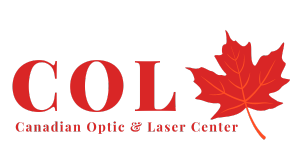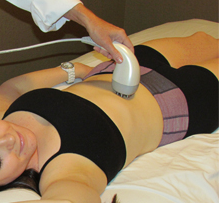Facts on Smoking
- Cigarettes contain over 4,600 potentially toxic substances per inhalation. Nicotine is the worst due to its highly addictive nature.
- In 2010, 20.8% of Canadians aged 12 and over — about six million people — were smokers. Health Canada estimates that 21% of all deaths in Canada can be attributed to smoking.
- 45,000 Canadians die from smoking related deaths each year. This is the same as 1 in every 5 deaths in Canada.
- For long-time smokers, the chance of dying from a smoking-related cause is 1 in 2.
- About half of all smoking-related deaths occur before the age of 70. Those who die before the age of 70 lose an average of 22 years of life expectancy. Those who die after the age of 70 lose an average of 8 years of life expectancy.
-
Ask A Question Here:
Smoking and Cancer
-
- Smoking is the single most preventable cause of cancer.
- Smoking is responsible for about 30% of all cancer deaths.
- Smoking is known to cause or increase one’s risk of developing:
- Lung Cancer:
- Cancer of the Mouth, Throat (Pharynx), Voice Box (Larynx), and Esophagus.
- Leukemia, Bladder Cancer, Stomach Cancer, Kidney Cancer.
- Pancreatic Cancer, Cervical Cancer.
- 85% of all lung cancers are caused by smoking. The risk of lung cancer increases the more you smoke and the longer you smoke.
What is Low Level Laser Therapy (LLLT)?
LLLT is the application of low level light therapy to treat numerous conditions. It has been researched and studied for over 50 years and is commonly used worldwide to successfully treat many kinds of musculoskeletal injuries, repetitive stress injuries and for acupoint therapies because it promotes healing and tissue repair. LLLT has also been found to be an extremely successful treatment for alcohol & drug addiction, weight control, and smoking cessation.
Is LLLT safe?
LLLT does not induce any thermal temperature and is non-invasive. LLLT is a safe, painless and medication-free treatment with virtually no negative side effects. It has been used in England, Canada and Europe for over 50 years with no documented adverse side effects. Laser therapy is a non-medical procedure and is respected by many physicians as a highly effective treatment method. Countless clients are raving about their successful treatment.
How does LLLT work?
The laser light easily penetrates through the layers of skin to activate healing responses by the cells and to stimulate the nerve endings to produce endorphins. Endorphins such as serotonin and dopamine are produced naturally by the body and are nature’s natural mood lifters and anesthetic. The endorphin production relieves the physical withdrawal symptoms of quitting smoking and helps keep a smoker from feeling anxious or moody. LLLT quickly helps to activate the body’s innate cellular communication system and positive immune, enzyme and endorphin response. Laser Detoxification is a method of low level laser or cold laser therapy that refers to deliver light into body through skin. Laser Therapy causes effects like bio-stimulation, analgesia and modulation of the immune system.
Will the treatment hurt?
No. LLLT is completely painless. In fact, most people describe an extremely relaxed feeling after being treated.
How many treatments do I need and how long does the treatment take?
The package includes 3 laser treatments in 3-4 days interval, in the first 2 weeks. Each treatment only takes about 30 minutes, depending on the client’s health conditions. Your first visit will include a personal consultation, so you should allow for at least an hour for that appointment. The effects of each treatment can last in your body for 72 hours or more based on the rate of metabolism in your body. Withdrawal is your body’s response to being without the drug nicotine. Everyone who quits smoking should expect some withdrawal symptoms as they quit smoking. Withdrawals symptoms don’t last forever. They usually become less noticeable after the first 4-5 days.
This treatment supports your body for the first 2 weeks. For some clients we can extend the laser treatment as one session per week for the 3th-4th weeks, and continue the treatment for second month by 1 session every other week. Laser Therapy will help you to stop smoking in the first day and will reduce the withdrawal symptoms and cravings. You can continue laser therapy up to 2 months in purpose to support your body to deal with cravings. Even though, when you feel more craving in the first 6 months you can ask for one booster session. For many people, 6-10 treatments are needed. For others more booster treatments may be necessary, depending on the smokers’ level of stress and their resolve to actually quit smoking. We understand that unexpected troubles happen in life. You can use the booster for any reason or just for the wonderful feeling of “well-being” the laser treatment gives you.
Is weight-gain possible?
Weight gain is avoidable when quitting smoking with laser treatment. Studies conducted in other countries have shown little to no weight gain with LLLT. If weight gain is a concern, ask the plan options to help that you do not gain weight while quitting. It has been found beneficial to eat 6-8 small meals per day to help control blood sugar. The glycemic index diet is worth looking at.
Will medical insurance cover the cost of laser therapy?
Since LLLT is not a medical treatment, insurance will not pay for it. However, the cost of many smoking cessation programs is tax-deductible and some employers have also been known to pay for the costs. Check this information with your accountant and/or employer.
Is the treatment guaranteed to work?
Nicotine addiction consists of two factors: the physical addiction and the mental addiction. The laser treatment is designed to relieve the physical withdrawal symptoms, but will not give you amnesia. If a person has smoked a pack or 2 a day for ten or twenty years, this means the patient will be making a huge change to their daily routine when they quit. Even if no physical symptoms are experienced, the patient will still think about smoking. Therefore, while we cannot make a guarantee, we will do everything in our power to ensure success. Laser treatment with education and commitment is what it is all about. Many clinics worldwide are reporting an average of 85-90% success rates.
Are there any health conditions for which laser therapy is not recommended?
Yes. LLLT is not recommended for those who have blockages, tumors, active cancers, epilepsy, or for those who are undergoing radiation or chemotherapy or are pregnant. If there are health concerns, consult a physician prior to treatment.
What to do prior to the first treatment?
Make a 100% commitment before arriving for treatment. Get rid of absolutely all cigarettes and smoking paraphernalia. Drink 8 glasses of water per day, drink juice, eat healthy foods and take at least 1000 mg of vitamin C per day. It is also a good idea to decrease caffeine intake for 3-5 days before initial treatment.
Is there anything extra that can increase success rate after the laser treatment?
Yes! Research has shown that ridding the body of residual nicotine is beneficial to the success of treatment as well as the increased health of the body. A natural method of achieving this involves drinking a combination of 1 teaspoon cream of tartar mixed in 8 oz. of Orange Juice one time per day for 7 days after a laser treatment.
How does the laser cessation treatment work?
We use a low level laser (also known as a therapeutic or cold laser). It works along the same principle as acupuncture but of course, no needles. The points that we work on are on the ears (auricular points), nose, hands, wrist, and forearm (meridian points). It is a very relaxing and pleasant treatment.
We work on four different stages with the treatment. First, we treat points for the addiction to nicotine, to help block your body’s need for the drug; second, we treat diet points to help control your appetite and avoid excessive weight gain; and third we treat a lot of stress and relaxation points to help avoid the withdrawal symptoms that you would normally experience if you tried to quit on your own, such as irritability, getting short tempered, etc. We try to take away all the negative feelings and make it a smooth transition for you. After that, we work on detoxification of your body from nicotine and other poisons from smoking by increasing the metabolic procedures in your body by LLLT.
What Happens When You Quit Smoking?
Each person will have their own set of withdrawal symptoms. For some people, withdrawal won’t feel so bad. For others, it will feel horrible. It’s different for each person. It depends on many things, including how much you smoke. In general, people notice symptoms within a few hours of quitting. Their symptoms may be worse in the evening.
- Within 20 minutes after you smoke that last cigarette, your body begins a series of changes that continue for years
- 20 minutes after quitting, your heart rate drops.
- 12 hours after quitting, carbon monoxide level in your blood drops to normal.
- After 24 Hours: Your lungs begin to clear out accumulated mucus and tar. Your pulse rate and blood pressure begin to lower.
- After 48 Hours: Your sense of smell and taste begin to improve as nicotine is eliminated from your body.
- After 72 Hours: Your bronchial tubes begin to relax, making breathing easier. Lung capacity increases.
- After 2-12 Weeks: Circulation improves, making walking and physical activity easier. Stamina improves
- After 2 weeks to 3 months your heart attack risk begins to drop and your lung function begins to improve.
- 1 to 9 months after quitting, your coughing and sinus congestion decreases. Lung function improves. Shortness of breath decreases. Energy level increases.
- 1 year after quitting, your added risk of coronary heart disease is half that of a smoker’s.
- 5 years after quitting, your stroke risk is reduced to that of a non-smoker’s.
- 10 years after quitting, your lung cancer death rate is about half that of a smoker’s. Your risk of cancers of the mouth, throat, esophagus, bladder, kidney, and pancreas decreases.
- 15 years after quitting, your risk of coronary heart disease and lung cancer is back to that of someone who has never smoked.
* The results may vary from person to person.



